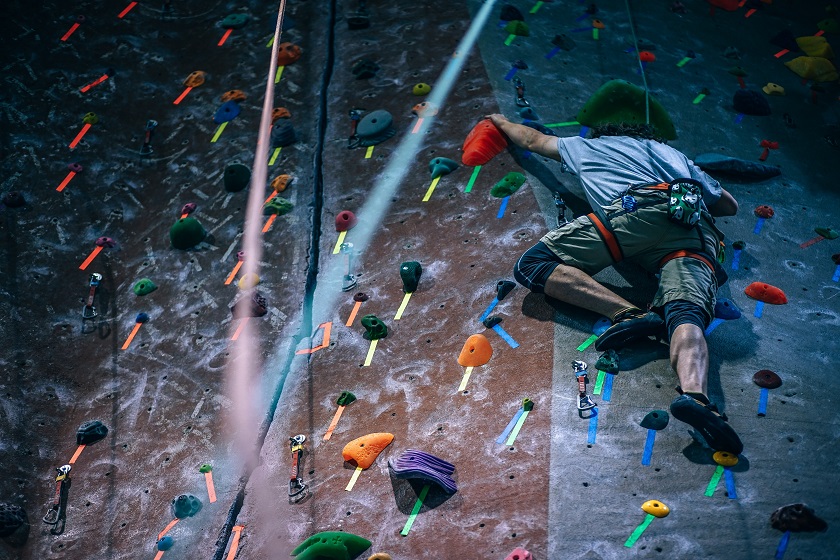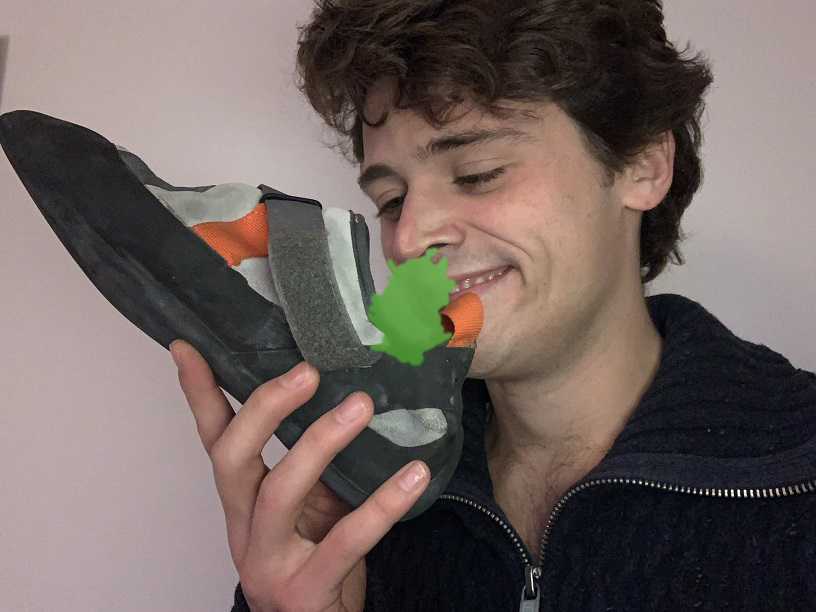Story time!
When I first set foot in the rock climbing gym, I couldn’t wait to get started! I came from a bouldering background, and I was excited to put my skills to the test way higher above the ground than I’ve ever climbed. A friend of mine said she would teach me the ropes, and so I thought I wouldn’t need any instructor’s instructions to start my indoor rock climbing adventure.
As a child, I had been rock climbing once or twice before. Moreover, I had googled subjects such as how to belay in preparation of my first climb. So I felt pretty confident we could be climbing safely within no time.
As I entered the climbing hall, an instructor noticed I wore my climbing harness wrong. That was quite a humiliating moment, as I told him minutes earlier we’d be fine without taking a class. His suspicion was raised.
We walked up to the climbing wall and she started explaining her belaying device. It turned out all the belaying knowledge I had gained from my online research was rendered pretty much useless, as we used a different belaying tool: the Grigri. The Grigri is a a belaying tool with an automatic break in case a climber falls and the belayer isn’t quick enough to react. This is perfect for beginners as it makes matters a lot safer, but working with a different tool still threw me off.
In 10 minutes time, we finally came to the point where we thought she had instructed me enough to start climbing. She was about 20 metres up the wall when the same instructor that had spotted my harness mounting mistake, sneaked up on me.
“I can see you’re very inexperienced”, he said.
And so I was.
To cut a long story short, for the rest of the day she was the only one that was allowed to belay. He insisted that I needed to take lessons before I’d be allowed to belay her without supervision. And rightfully so, frankly. Of course it was nice to be able to climb twice as much as I otherwise would have, but still I felt bad for my partner.
This made me wonder: are you generally allowed to rock climb without an instructor?

Liability of Rock Climbing Gyms
Rock climbing gyms are liable for accidents happening in their gym. This is why they’re uncompromising when it comes to inexperienced belayers. To them, it doesn’t matter if you’re climbing with an experienced climber who can teach you everything about climbing and belaying safely. If an accident happens, it’s their liability and they want to make damn sure nothing happens on their watch.
So how strict are these gyms across the world? Where can / can’t you climb without an instructor?
Indoor Rock Climbing without an instructor in The Netherland
So apparently, in The Netherlands, where I live, you have to be a certified rock climber to be allowed to climb and belay indoors without an instructor.
They need you to take 4 lessons and pass an exam. If you go to a different climbing gym, you need to be able to show or prove to them that you’ve had proper training and completed it successfully.
Failing to be able to prove to them that you are in fact an experienced climber, will quickly result in you being forced to take a lesson, as I learned myself. It’s a great business model for them, of course, but it’s not hard to see why this is the case.
Belay Certification in America
In America, in turns out you also have to be belay-certified in order to be allowed to secure your rock climbing partner when practising indoors. It doesn’t matter if you’re belaying with a grigri or not, you have to be belay-certified.
If you don’t have a certificate to belay and still want to climb without having to pay for an expensive instructor (which is worth it in the long run, though) then I suggest you find a rock climbing gym where they have automatic belaying devices. These are machines that essentially enable you to top rope without a climbing partner.
Belay Certification Requirements
Generally, there’s 9 requirements to complete your belay certification. You need to:
- Be older than 13 years old
- Be able to put on your harness correctly
- Make the proper figure 8 retrace knot with a backup
- Be able to demonstrate how the rope belays
- Know the different belaying commands
- Perform the correct safety checks before climbing
- Belay in action and have you hand on the break side at all times
- Catch staged falls
- Demonstrate proper lowering technique
For lead climbing, one must be able to do all of the above. To get certified as a lead climber, you generally have to perform the climbing task on a intermediate difficulty climbing wall. Some climbing gyms require you to be older than you have to be just to be belay-certified.
In France
I’ve been told that rock climbing gyms in France are a bit more easy going when it comes to maintaining the obliged belaying certification.
Possibly, this is because rock climbing is more ingrained in the French culture, as there’s plenty of mountains around where people climb.
Of course, anecdotal evidence only bring us so far. Even when you’re climbing in France, you should seriously consider whether you’re really ready to belay a friend without additional training.
Be a responsible climber and get your climbing certificate
Don’t be like me. Make sure you get the proper training before ever allowing someone to put their lives in your hands. Even if they don’t care. Even if they trust you. Not even if they’re protected by the safety of the grigri.
There’s countless of things that can go wrong when belaying. Having two people that know all the safety checks before the ascent, is a necessary precondition for a fun and safe climbing career that ages well.
Your local climbing gym will be more than willing to take you in to give you the proper climbing and belaying education you need to be a responsible climber. Sure, reading an article online may help. But it can never fully replace a proper real life climbing class by an instructor.






